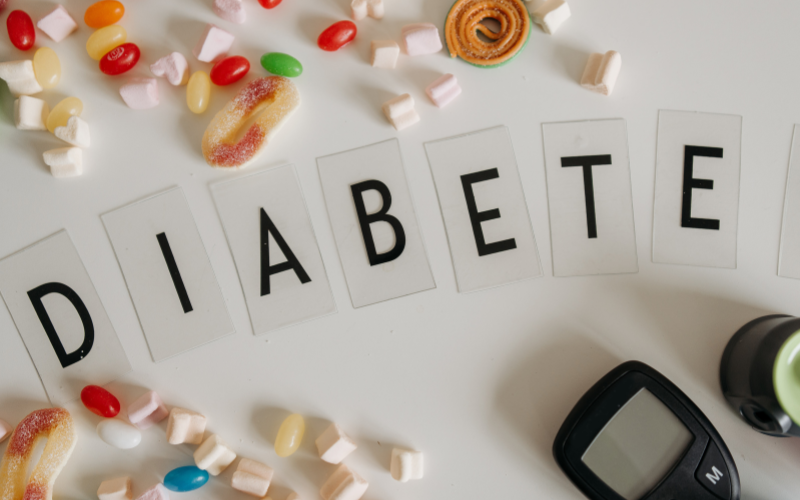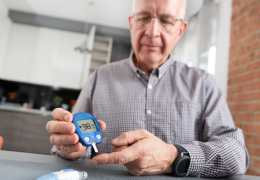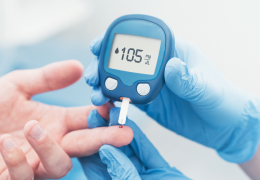While it’s uncommon for high blood sugar to suddenly reach life-threatening levels such as coma or death, persistently elevated blood sugar poses significant dangers. These include complications like disability, blindness, and even fatal outcomes due to its impact on the heart, eyes, blood vessels, and nervous system.

Understanding the signs of high blood sugar is essential for early detection and prevention of serious health issues. These signs include fatigue, increased thirst, frequent urination, and numbness in extremities. By identifying these symptoms early, you can take proactive steps to manage blood sugar levels.
Let’s dive into how to identify high blood sugar, understand its causes, and effectively manage this condition with Lim.
Recognizing High Blood Sugar
To address high blood sugar early, it’s crucial to recognize its warning signs and rely on specific blood sugar measurement indicators.
Warning Signs of High Blood Sugar
Elevated blood sugar manifests through both neurological and physical symptoms:
- Neurological Symptoms: Fatigue, intense hunger, increased thirst, low mood, and irritability.
- Physical Symptoms: Tingling or numbness in the feet, slow healing of wounds, unexplained weight loss, and unusual dark patches on the skin, especially in areas like the armpits or back of the neck.
These symptoms can vary among individuals. Some people may notice clear signs, while others might only become aware during a medical check-up. Blood sugar levels are confirmed through measurement indicators.
High Blood Sugar Indicators
Medical professionals assess blood sugar by checking fasting blood sugar (after an 8-hour fast) and post-meal blood sugar (2 hours after eating). Additionally, the HbA1c test evaluates blood sugar control over the past three months.
A person is diagnosed with high blood sugar if any of these indicators exceed the following thresholds:
- Fasting blood sugar: ≥ 5.6 mmol/L (100 mg/dL).
- Post-meal blood sugar: ≥ 11.1 mmol/L (200 mg/dL).
- HbA1c level: ≥ 5.7%.
Why Is High Blood Sugar Dangerous?
Chronic high blood sugar disrupts glucose, fat, and protein metabolism, triggering a cascade of harmful effects. This metabolic imbalance can lead to:
- Heart damage: Increased risk of atherosclerosis, stroke, and heart attacks.
- Kidney damage: Blocked blood flow to the kidneys, reduced kidney function, and a higher risk of kidney failure.
- Nerve damage: Prolonged high blood sugar harms blood vessels supplying nerves, potentially causing paralysis.
- Eye damage: Capillary damage in the eyes, increasing the risk of vision loss.
High blood sugar also weakens the immune system, slows wound healing, and heightens susceptibility to infections. Rare but severe complications, like diabetic ketoacidosis or osmotic coma, can develop if blood sugar spikes rapidly. Without prompt treatment, these conditions can be fatal.
Common Causes of High Blood Sugar
Several factors contribute to elevated blood sugar:
- Easily controllable causes: Diets high in sugar, prolonged stress, lack of physical activity, illnesses, fever, infections, or injuries.
- Insulin resistance: This condition makes fasting blood sugar levels unstable and exacerbates post-meal spikes, increasing the risk of atherosclerosis and lipid imbalances. Tackling insulin resistance is vital for effective blood sugar control and reducing dependency on medication.
Managing Blood Sugar at Home
To maintain healthy blood sugar levels, consider these practical strategies:

High blood sugar complications include heart disease, nerve damage, and kidney failure
Stay Active
Engage in moderate exercises like yoga, swimming, cycling, or jogging for at least 30 minutes daily. Physical activity reduces insulin resistance and enhances the body’s ability to use sugar effectively, leading to long-term benefits.
Prioritize Quality Sleep
Sleep deprivation can increase stress hormones, leading to higher blood sugar. Aim for at least six hours of restful sleep each night to support your health.
Eat Mindfully
Incorporate green vegetables, whole grains, beans, fruits, and low-fat dairy into your diet. These foods have a low impact on blood sugar and provide essential nutrients. To minimize post-meal spikes, start meals with vegetables or soup before consuming carbohydrates.
Conclusion
High blood sugar poses serious health risks if left unchecked. The good news is that through awareness, preventive measures, and healthy lifestyle choices, you can manage your blood sugar and protect your well-being. The key to overcoming the dangers of high blood sugar lies in understanding and addressing it proactively.






